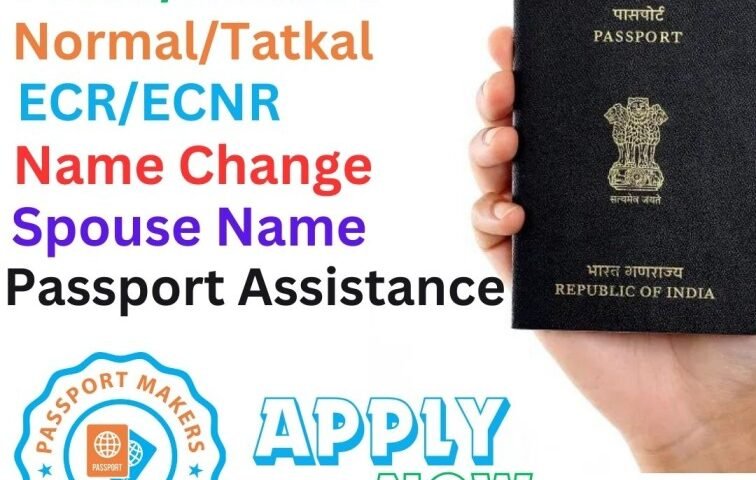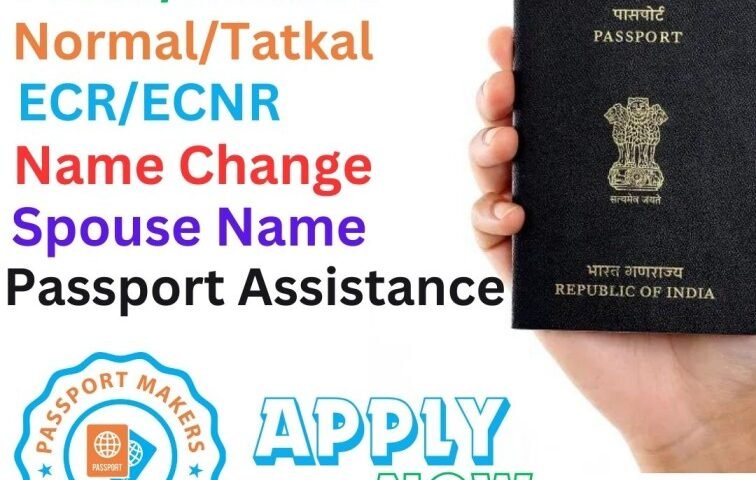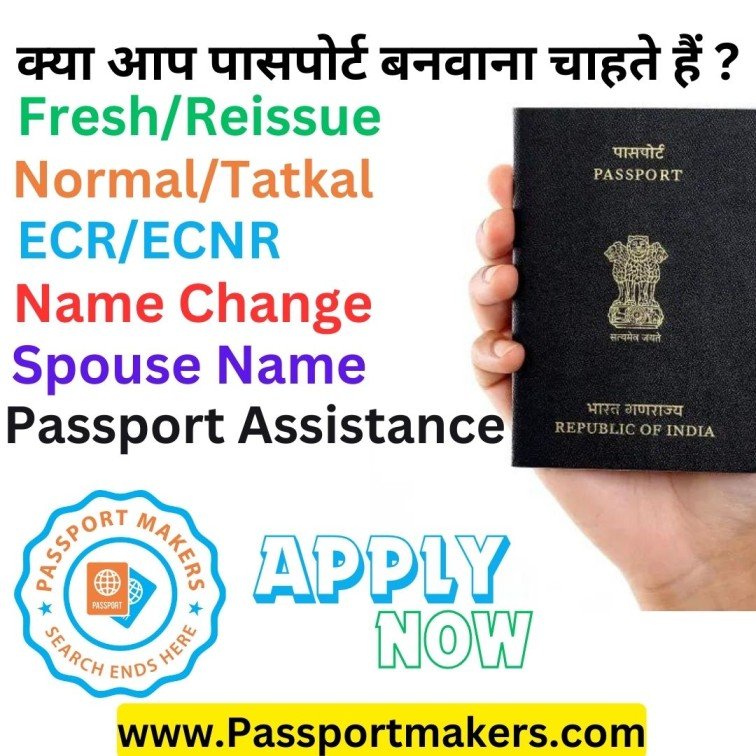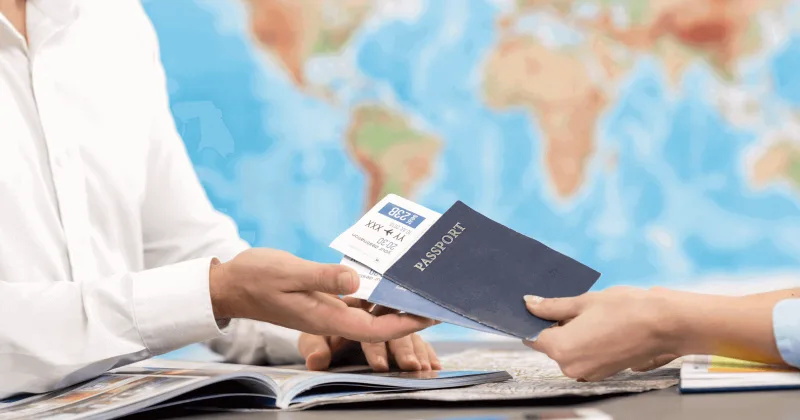
Best passport agent in Dwarka sector 4 Delhi
Best passport agent in Dwarka sector 4 Delhi , Delhi Why to Choose Passport makers
✈ India’s top passport service provider – Not just traditional passport consultant
✈ Faster processing – We make the passport process faster
✈ Guaranteed passport – Get guarantee success with our advisors
✈ No hidden cost – Transparent pricing
✈ Accurate guidance – We have the knowledge and experience to make the process smooth and stress-free
✈ Our presence – Apply for passport from anywhere in India, always open for you
✈ Safety & Confidentiality – Your privacy is out utmost priority
PASSPORT APPLICATION PROCESS IN DELHI : Best passport agent in Dwarka sector 4 Delhi
- Passport application form filling – Application form is to be filled up online. read more
- Fees payment – Passport application fees can be paid either online or offline at any SBI branch
- Appointment scheduling – Once payment is done, scheduling of appointment at nearest passport seva kendra is required for document verification and biometric purpose
- Visit to passport seva kendra – On the day of appointment, applicant needs to visit to the passport seva kendra for biometric and document verification
- Police verification – There will be police verification at the current address
- Passport issuance – Once police verification is done , passport will be issued
- Delivery of passport – Passport gets delivered by post at the current address
PASSPORT APPLICATION MODE : Best passport agent in Dwarka sector 4 Delhi
On the basis of processing time and urgency , there are two types of passport application process :
Normal Passport
It is a standard passport application procedure. The entire process normally takes 25-30 days. Before a passport is issued, police verification is done.
Tatkal Passport
If you need a passport right away, you should apply through the tatkal process. It takes 3-4 days to receive a passport through the Tatkal process. Following the issuance of a passport, police verification is done. The tatkal passport comes with an additional price of Rs. 2000.
NO. OF PAGES IN PASSPORT
While applying for passport you get 2 options for number of pages in the passport
- 36 pages
- 60 pages
PASSPORT FEES IN India
Following is the passport fees for 36 page passport. For 60 pages there is additional fees of Rs. 500.
Normal passport fees
Adult passport – Rs. 1500
Minor passport – Rs. 1000
Duplicate/ lost passport – Rs. 3000
Tatkal passport fees – Rs. 2000
VALIDITY OF PASSPORT
There is validity period defined in the passport issued .
Adult passport – 10 years
Minor passport – 5 years
APPLY FOR PASSPORT IN DELHI WITH PASSPORT MAKERS
Now you can apply for passport in Delhi from the convenience of your home while our experts will help you in getting a passport without fear of rejection. The steps for online passport apply with PASSPORT MAKERS are :
- Requirement understanding of the client
- Verification of the documents
- Advance payment by the client
- Online application filing and appointment scheduling
- Visit of the client to Passport Seva Kendra for document verification and photograph
- Police verification at the address given
- DOCUMENTS REQUIRED FOR NEW PASSPORT IN DELHI
- If you are applying for a passport for the first time, you should go through the new passport application process.
- Documents required for new passport is
- Proof Of Present Address
- Proof Of Date Of Birth
- Documentary proof for any one of the Non-ECR (previously ECNR) categories
- Documents acceptable as current address proof are :
- Voterid
- Aadhar card
- Electricity bill
- Telephone bill (landline or post paid mobile bill)
- Photo passbook of bank
- Gas connection
- Certificate from Employer on PSU letter head (for Govt. Employees)/ HR letter from reputed company/ Registered rent agreement )
- Water Bill
- Income Tax Assessment Order
- Spouse’s passport copy (First and last page including family details mentioning applicant’s name as spouse of the passport holder), (provided the applicant’s present address matches the address mentioned in the spouse’s passport)
- Parent’s passport copy, in case of minors(First and last page)
- Rent Agreement
- Date of birth proof
- Documents acceptable as
- Birth certificate
- 10th certificate
- Aadhar card
- Driving License
- PAN card
- Policy Bond issued by the Public Life Insurance Corporations/Companies having the DOB of the holder of the insurance policy
- Copy of an extract of the service record of the applicant (only in respect of Government servants) or the Pay Pension Order (in respect of retired Government Servants), duly attested/certified by the officer/in-charge of the Administration of the concerned Ministry/Department of the applicant
- Election Photo Identity Card (EPIC) issued by the Election Commission of India
- A declaration given by the Head of the Orphanage/Child Care Home on their official letter head of the organization confirming the DOB of the applicant
- Documents for ECNR category
- 10th certificate
- Income tax return
- DOCUMENTS REQUIRED FOR PASSPORT RENEWAL IN DELHI
- If there is change in personal particular or there is correction in passport such as name, date of birth, spouse name , address etc. , one should opt for re-issue of passport. Documents required for re-issue of passport :
- 1. Old passport
- 2. Supporting document for change or correction if any
- 3. Current address proof of last 1 year
- Voterid
- Aadhar card
- Electricity bill
- Telephone bill (landline or post paid mobile bill)
- Photo passbook of bank
- Gas connection
- Certificate from Employer on PSU letter head (for Govt. Employees)/ HR letter from reputed company/ Registered rent agreement )
- Water Bill
- Income Tax Assessment Order
- Spouse’s passport copy (First and last page including family details mentioning applicant’s name as spouse of the passport holder), (provided the applicant’s present address matches the address mentioned in the spouse’s passport)
- Parent’s passport copy, in case of minors(First and last page)
- Rent Agreement
- DOCUMENTS REQUIRED FOR DUPLICATE PASSPORT
- 1. Old passport copy/ Old passport original (if damaged)
- 2. Original Police FIR ( In case of loss of passport )
- 3. Current address proof of last 1 year ( if the current address is different from the address on lost passport)
- Voterid
- Aadhar card
- Electricity bill
- Telephone bill (landline or post paid mobile bill)
- Photo passbook of bank
- Gas connection
- Certificate from Employer on PSU letter head (for Govt. Employees)/ HR letter from reputed company/ Registered rent agreement )
- Water Bill
- Income Tax Assessment Order
- Spouse’s passport copy (First and last page including family details mentioning applicant’s name as spouse of the passport holder), (provided the applicant’s present address matches the address mentioned in the spouse’s passport)
- Parent’s passport copy, in case of minors(First and last page)
- Rent Agreement
-
- DOCUMENTS REQUIRED TATKAL PASSPORT DELHI
- Tatkal passport in Delhi can be applied if there is urgent need of passport for travel. Tatkal passport in Delhi normally takes 3 days time.
- Following are the documents required for Tatkal passport Delhi
- 1. Current Address poof of 1 year
- 2. Date of birth proof
- 3. Supporting documents for ECNR passport
- 4. 3 documents out of following 13 documents
- Aadhaar Card/e-Aadhar containing the 12 digit Aadhaar number issued by the Unique Identification Authority of India(UIDAI)
- Electors Photo Identity Card (EPIC)
- Service Photo Identity Card issued by State/Central Government, Public Sector Undertakings, local bodies or Public Limited Companies
- Scheduled Caste or Scheduled Tribe or Other backward class Certificate
- Arms License issued under the Arms Act, 1959(54 of 1959)
- Pension Document such as ex-servicemen’s Pension book or Pension payment order issued to retired government employees, ex-servicemen’s Widow or Dependent Certificates, Old Age Pension Order
- Last Passport issued (in case of re-issue only)
- Permanent Account Number(PAN)
- Bank Passbook or Kisan Passbook or Post Office Passbook
- Student Photo Identity Cards issued by Recognized Educational Institutions
- Driving Licenses (valid and within the jurisdiction of State of submission of applicant)
- Birth Certificates issued under the Registration of Births and Deaths Act, 1969 (18 of 1969)
- Rations Cards
- Get more information about Tatkal passport on the page Tatkal passport.
- Validity of passports
- Passport for adults is valid for 10 years from the date of issue and can be re-issued after their expiry. Again, a minor’s passport validity is restricted to 5 years or till they attain the age of 18, whichever is earlier.
- REGIONAL PASSPORT OFFICE DELHI
- Passport applicants who live in the regional passport office Delhi jurisdiction should choose regional passport office Delhi while submitting their passport application. The passport office in Delhi has three passport seva kendras:
- Passport Seva Kendra Delhi
- Hudco Trikoot-3,
- Bhikaji Cama Place,
- R.K.Puram,
- New Delhi – 110066
- Passport seva kendra Delhi
- Ground & First Floor,
- Herald House, 5A,
- Bahadur Shah Zafar Marg,
- New Delhi – 110002
-
- Passport seva kendra Delhi
- Aggarwal Auto Mall,
- Plot No.2,
- District Center,
- Shalimar Place,
- Outer Ring Road,
- Delhi-110088
- Who are eligible for ECNR passport?
- Following are the people eligible to apply for passport under ECNR category :
- All holders of Diplomatic/official Passports
- All GAZETTED Government servants, their spouses and dependent children.
- All persons having educational qualifications of matriculation and above
- All persons above the age of 50 years
- Income-Tax payers (including Agricultural Income-Tax payees) in their individual capacity, their spouses and dependent children below the age 18 years
- Persons possessing two years diploma from any institute recognized by the National Council for Vocational Training (NCVT) or State Council of Vocational Training (SCVT), or persons holding three years diploma/equivalent degree from institutions, such as Polytechnics recognized by the Central/State Governments of India
- Nurses possessing qualifications recognized under the Indian Nursing Council Act. 1947
- All professional Degree holders , their spouses and dependent children. Examples of professional degree holders are Doctors holding MBBS degree or equivalent degree in AYURVED or HOMEOPATHY, accredited Journalists, Engineers, Chartered Accountants, Cost Accountants, Lecturers, Teachers, Scientists, Advocates, etc
- All persons who have been staying abroad for more than three years (the period of three years could be either in one stretch or broken) and their spouses
- Seamen who are in possession of Continuous Discharge Certificate (CDC), or Sea Cadets and Deck Cadets
- Persons holding Permanent Immigration Visa, such as the visas of UK, USA and Australia.
- Note : If the applicant does not have Non-ECR status then All such ECR passport holders need to obtain Emigration Clearance Certificate from the Protector-General of Emigrants, Ministry of Overseas India Affairs.
- Official site















